Curcurbitaceae xerosicyos danguyi. Right. I’m not sure how to pronounce it, either! So I suppose we could take the easy way out and call it silver dollar plant, or dollar vine, or penny plant, names it is also known by. I think dollar vine best describes it. Round green coins on a stem.
I bought this plant as a small little starter plant from the horticulturist at Sul Ross University in Alpine, Texas, when I made a trip down there in 2003 to speak to their education majors and student teachers while serving as state president for Texas Classroom Teachers Association. It was like nothing I had seen before, so of course I had to have one. I had not seen this plant for sale since then, until just last year when one of the big box stores had a few pots for sale. Whether it will show up this spring amid the other succulents and become a popular choice remains to be seen, but it is definitely one of the more unusual succulents.
This little climbing vine is native to southwest Madagascar, home to many other unusual succulents. And while it may be unusual, it is a member of the curcurbita family, which includes squash, gourds, pumpkins, and zucchini, plants that are not that unusual! Just because they are in the same family, however, doesn’t mean they look and act like each other, but I thought that was interesting that that bunch of plants have a family gene in common some where down the line. In fact, the three species of c xerisicyos are nothing like each other, either. C xerosicyos perrieri has thinner stems and smaller leaves; c xerosicyos pubescens is completely different, actually more commonly found to be bought, and is mostly a large caudex that produces deciduous vines with lobed semi-succulent leaves that die back in the dry season and during prolonged periods of drought.
But I digress. In Madagascar these plants are growing in the ground and become woody vines that use other trees for support as they reach for the canopy of the forest for light. The little tendrils curl around whatever they are close to for support. The tendrils in the picture below are reaching for something to curl and hold onto. C. xerosicyos danguyi is said to bloom little yellow flowers, but mine has never bloomed. That could be because these plants are dioecious, plants that require both a male and female plant to set seeds, and I only have one plant.
I would love to put my specimen in the ground and let it grow big and climb a trellis or pole, but this is not the zone to do it in. The plant is said to be cold-hardy to 30-25 degrees, but considering it gets considerably colder than that here-remember that blizzard we just went through?-I keep mine as a hanging basket and trim it back from time to time.
The experts say to repot the plant about every year or so with fresh soil. I haven’t done that, but the plant seems to be dong fine in spite of that. Cuttings can be rooted as with other succulents; you will want to make the cutting where the woody stem is soft and young and let the cut dry overnight before planting. Water your plant more when it is actively growing, less in cooler weather. But mine seems to like a bit more water than other succulents. Just make sure you don’t let it get dry enough for the leaves to wrinkle.
Enjoy your plant but watch during the growing season that the tendrils on the ends of the vine don’t latch onto something you don’t want it to!
https://shop.cacti.com/landscape-succulents/xerosicyos-danguyi/
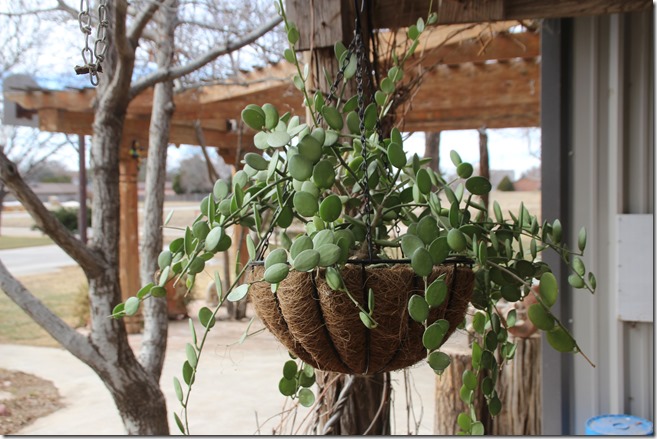
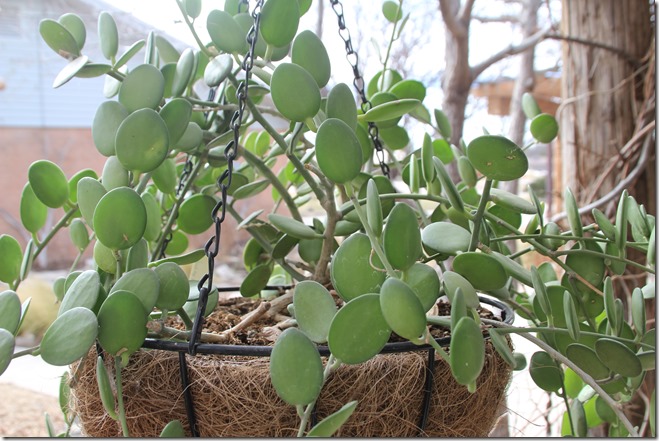
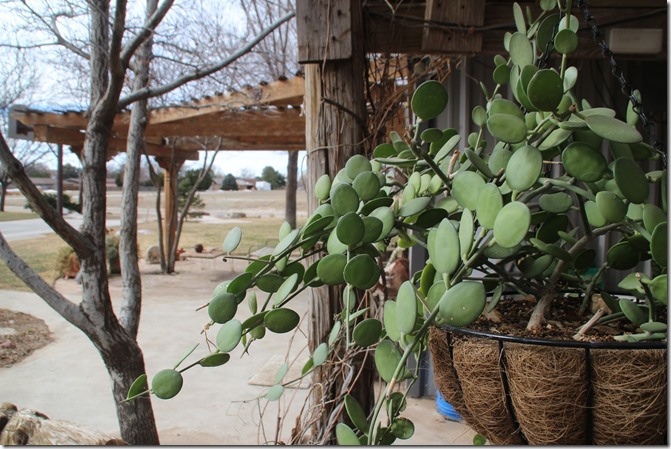
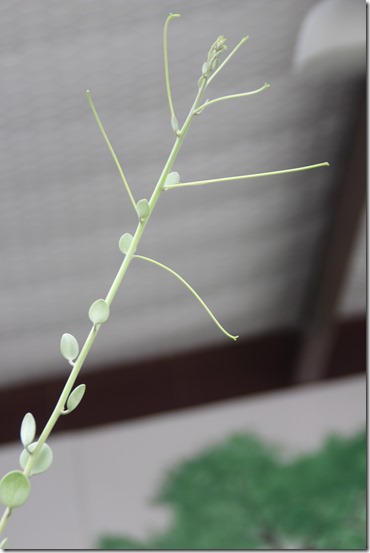
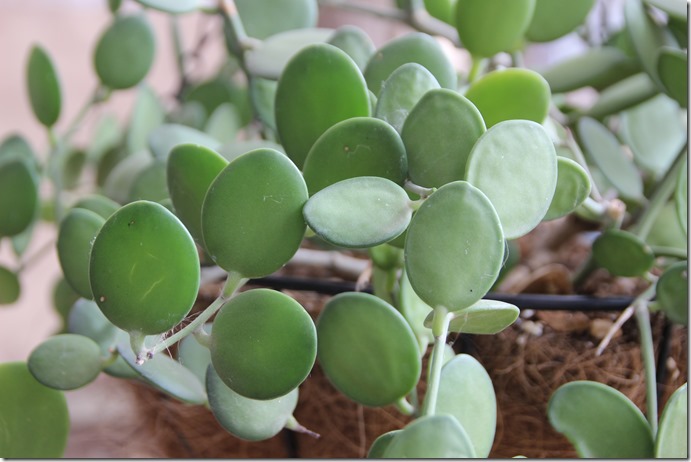
I got a clipping from a friend. I took a potato peeler and trimmed some of the skin from the stem and was able to root in water. I love this plant and have not seen another anywhere. Very slow grower. Have been trying to find out what it was for a long time.
Interesting that you got it to root in water! Most succulents would rot in water.
I’ve had mine for a little over a year, but suddenly the new growth is not growing around shape, but elongated and slightly cupped under. Anyone know why?! 🙁
Check for insects and perhaps find a different location. Is it getting enough sun? I also water mine a bit more than some of the other succulents. If you do see insects, try the old soapy water spray remedy. That might help. Wish I had more ideas for you, and I certainly hope it gets better!
I’ve literally cut the tip off with a few leaves- 7 or 8- and stuck it in the dirt with another succulent starter. They took off like wildfire! I’m in Iowa, so they overwinter in my west facing picture window to get enough sunlight. My house is dry so i just found out the hard way that I’ve overwatered one of my 3 large pots (thanks to a little Googling, its how I came across your blog.) Did a little surgery with my scissors and will let it dry out and hope she bounces back. I love this plant!
Good for you, Woody! I haven’t had that much success rooting mine, but some have rooted. Keep doing what you are doing. thanks for reading.
Question! Will it sprout out new branches on its own or does it need to be cut and propagated like a string of pearls or something to get a fuller plant instead of just a couple long stems?
Danielle, I think it will make new branches on its own; mine has over the years. As to propagating, I have found it hard to get cuttings to take root, but that doesn’t mean you won’t be successful doing it, so go for it. Also, if you prune your plant, it should make new crowns where a leaf intersects the stem. Make cuts right above a set of leaves and see if that will work.
I’ve been searching with no luck but how long do these beauties take before I see new length or new growth?
Mine has grown all summer, so I am not sure I know how to answer your question. If yours isn’t growing, perhaps a change in location would help, or perhaps a bit more water. Mine is a mature plant, so if yours is young, you may have to be patient! I also have it in filtered sunlight. Hope this helps.
Hi, I live in east California and I’ve purchased a rooted plant on etsy and planted it in cactus mix. Due to a confusion with my shipping address the plant sat in the mailbox for a week but it seems fine. I’ve had it for a month now. Some leaves have fallen which I stuck in the soil hoping for them to root but they just wrinkled. I see three leaves on the stem wrinkling while the rest are fine. I do not understand why is that. I check my soil with moisture meter before watering and it is under a grow light facing NW window. Also, there are two tendrils which have dried out when I received them. Will there be any new growth considering it’s autumn now? I appreciate any advice and help! Thank you!
Oh dear! The fact that the tendrils have dried up makes me think the plant needs more water, but it is hard to say without seeing the plant. You may just have to be patient and see what happens. My vine had a growth spurt in late summer here where I live, but has sort of slowed down now. You might try a different location and do continue to water. My watering advice is always to water well, but don’t let the plant stand in water and let it dry out before watering again. Try using a thin bamboo skewer from the kitchen aisle, stick it down in the dirt. If it comes back wet with dirt sticking to it, don’t water yet. If it comes back dry, water well and allow to dry out again. I don’t know if this will help or not. Sometimes we just lose a plant along the way, unfortunately. Good luck and don’t give up!
Hi Alice,
Thank you for the quick reply! I’ll move the plant and water it thoroughly this time and see what happens. I appreciate your prompt reply. Thanks again for your help.
You are quite welcome! I hope it responds to the changes.